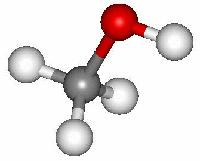|
The entry is based on
(1) H. S. P. Müller, V. V. Ilyushin, A. Belloche,
F. Lewen, and S. Schlemmer,
2024, Astron. Astrophys. 688, Art. No. A201.
The study combines rotational and rovibrational data pertaining
to vt = 0 and 1 plus some low energy K
transitions of vt = 2. By far the most data are
from this work. A small amount of transitions in vt = 0
below 36 GHz are from
(2) Y. Hoshino, M. Ohishi, and K. Takagi,
1991, J. Mol. Spectrosc. 148, 506.
Also used in the fit were far-infrared transition frequencies
from
(3) G. Moruzzi, R. J. Murphy, J. Vos, R. M. Lees, A.
Predoi-Cross, and B. E. Billingurst,
1991, J. Mol. Spectrosc. 268, 211.
A small number of transitions between the lowest two torsional
states gain intensity through torsion-rotation interaction.
Some of these lines were recorded in the laboratory.
The entry provides 17O hyperfine splitting
throughout, even though most of the lines are probably not
resolved in astronomical spectra. However, many of the
particularly important low energy transitions may be resolved.
The quantum numbers are J, Ka,
Kc, m, and F. The values 0 and 1
of m correspond to A and E symmetry
levels, respectively, of vt = 0,
and the values -3 and -2 correspond to A and E
symmetry levels, respectively, of vt = 1.
The sign of Ka (with "+" omitted")
reflects the parity for A symmetry states and the
usual signs of K values in degenerate vibrational
states for E symmetry states.
The calculated frequencies should be reliable throughout;
some caution is advised for transitions reaching the
limit of J (50) or Ka (17).
Please note:
No experimental lines have been merged in the present entry.
The list of
experimental lines (with reference labels) can
be accessed in the Cologne Spectroscopy Data section.
The rotation-torsional part of the partition function is
converged. Very small contributions by small amplitude
vibrations have been omitted. Please note the mostly
non-standard temperatures. These were evaluated by replacing
gN with gF and with
gI = 1; the line strength of an unresolved
line was distributed over the hyperfine components.
The dipole moment components are averages from measurements
of CH316OH by
(4) I. Mukhopadhyay and K. V. L. N. Sastry,
2015, J. Mol. Spectrosc. 312, 51;
and of CH318OH by
(5) K. V. L. N. Sastry, I. Mukhopadhyay, P. K. Gupta,
and J. VanderLinde,
1996, J. Mol. Spectrosc. 116, 38;
the remainder of the dipole moment function was
taken from
(6) M. A. Mekhtiev, P. D. Godfrey, and J. T.Hougen,
2021, Infrared Phys. Technol. 116, Art. No. 103605.
|
